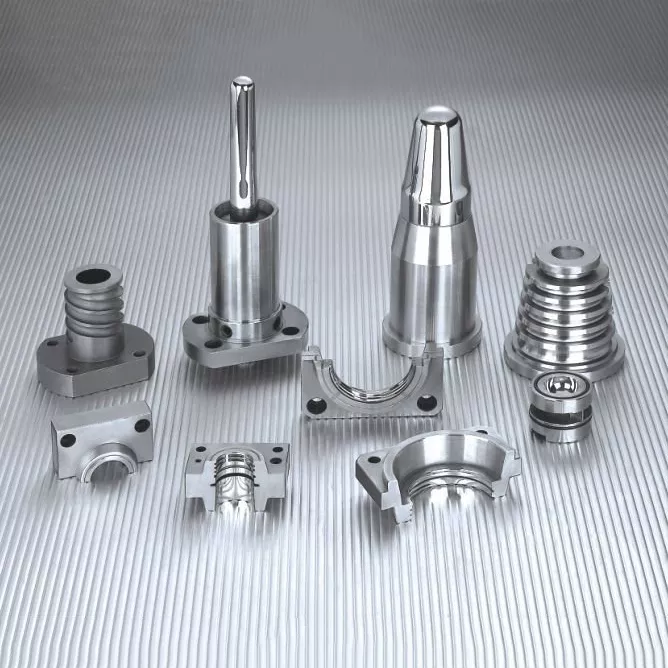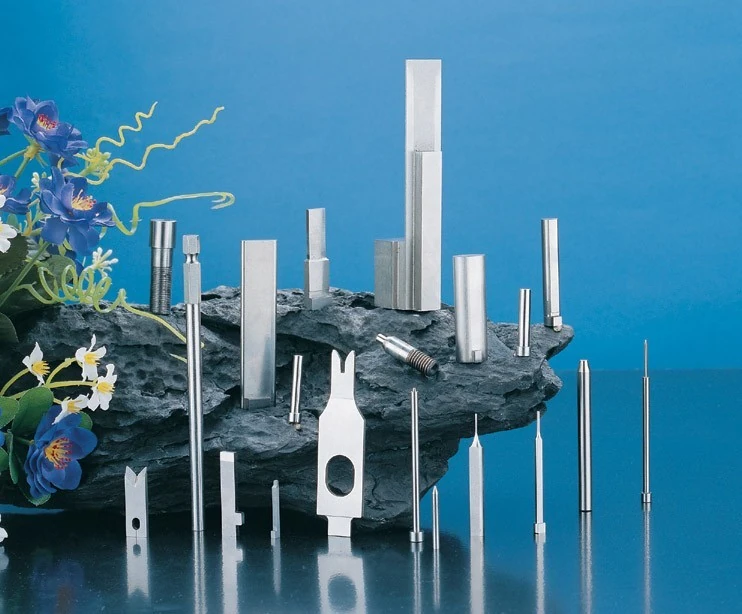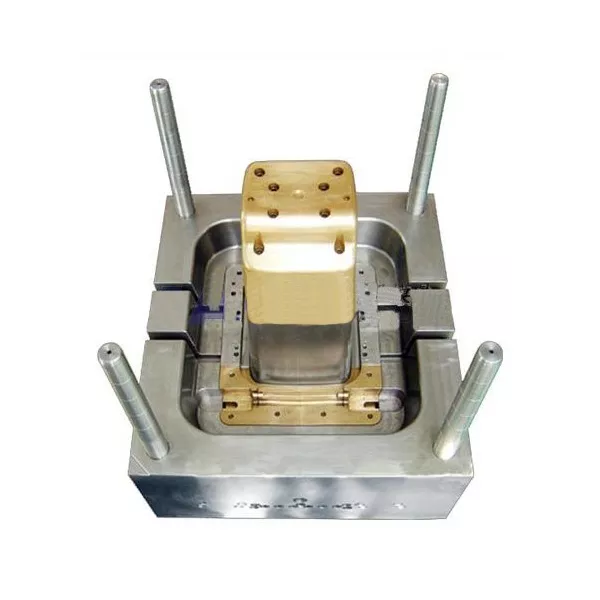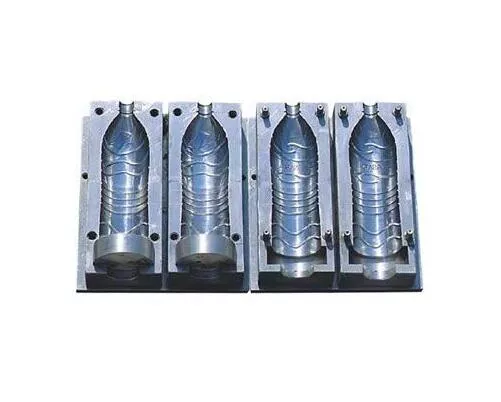Silikon kalıp
- 2024-10-29
Silikon kalıplar el sanatları yapmak için özel kalıplardır. Kauçuk aletlerin hammaddeleri özelliklerine göre sıradan silikon ve meteorolojik silikona ayrılabilir. Silikon, yüksek sıcaklık direnci, korozyon direnci, güçlü yırtılma direnci ve yüksek simülasyon hassasiyeti ile karakterize edilir ve bu da onu çeşitli el sanatları yapmak için bir kalıp haline getirir.
Silikon kalıplar için hammaddeler
Silikon, mükemmel çevresel performansı nedeniyle giderek daha popüler hale geliyor. Silikon kalıp bilgisini anlamak için öncelikle silikon hammaddelerinden başlamak gerekir.
1. Çökeltilmiş silikon jel olarak da bilinen sıradan silikon jel
Renk: Yarı saydam, süt beyazı, açık sarı, gri vb.
Sertlik: 30°, 40°, 50°, 60°, 70° vb., genellikle 40° -70° arasındadır.
Yoğunluk: 1,1-1,12g/cm³
Uzama oranı: %400
Kullanımı: Yaygın olarak cep telefonu düğmeleri, çeşitli öğeler, iletken yapıştırıcılar vb. gibi düşük kaliteli silikon ürünlerde kullanılır.
Saf silikon jel olarak da bilinen meteorolojik yapıştırıcı
Renk: Şeffaf.
Sertlik: 30°, 40°, 50°, 60°, 70°, 80°, vb., genellikle 40° ile 60° arasındadır.
Yoğunluk: 1,1-1,12 g/c
Uzama oranı: %600 -%700
Özellikler: İyi şeffaflığı ve güçlü gerilme mukavemeti nedeniyle. Yüksek maliyet
Kullanımı: Silikon borular, koruyucu kılıflar ve yüksek elastikiyet gerektiren diğer üst düzey ürünler.
2. Silikon hammaddeleri fiziksel özelliklerine göre katı silikon ve sıvı silikon olarak ikiye ayrılabilir.
Katı silikon esas olarak kalıplanmış ürünler için kullanılır. Örneğin, silikon manşonlar, silikon sofra takımları, silikon kalıplar, silikon düğmeler vb. Sıvı silikon esas olarak silikon emzikler, silikon tüpler vb. gibi ekstrüde ürünler için kullanılır.
Isı yalıtımlı silikon ped, mükemmel yüksek sıcaklık dayanımı. Silikon (gıda sınıfı silikon) 200 °C'ye kadar yüksek sıcaklıklara dayanabilir ve uzun süre kullanılabilir. Bu ürünün üretim malzemeleri gıda sınıfı standartlarına uygundur ve FDA gıda sınıfı testinden geçmiştir. Kokusuzdur ve toksik değildir. Üretici kalıba göre üretim yapar, renk ve şekil özelleştirilebilir.
Kalıp açma şekli ve kalıp hattı seçimi çok önemlidir. Öncelikle kalıbı alma kolaylığı içindir. İkinci olarak kalıp hattı ürünün genel etkisini etkilemeyecek şekilde seçilmelidir. Üçüncüsü, ürün kalitesini etkilememelidir. Örneğin, su özelliği serisi ürünlerin kalıp hattı konumu çok yüksektir ve kalıp hattını kapatmak için çok fazla malzeme gerekir, bu da ürünün kolayca çatlamasına neden olabilir; Dördüncüsü, kalıbın yarısının kesilmesi gibi proses operasyonlarının sayısını azaltmaktır.
Silikonun etrafa akmasını önlemek için kalıp tohumlarını tahta blok veya tahtalarla düzenli aralıklarla sabitleyin. Kalıbı açarken ilk parçayı ahşap tahtalar ve yağ çamuruyla ayırın. Yağ çamuru ile küf tohumları arasında boşluk olmaması, yağ çamurunun yüzeyinin düzgün ve düz olması gerekmektedir. Yukarıdaki çalışmanın hazırlanmasından sonra alçı kalıp veya kalıp tohumu üzerine Vazelin veya sprey ayırıcı madde uygulayın. Pürüzsüz ürünler, Vazeline batırılmış ve küf tohumunun üzerine eşit şekilde kaplanmış temiz bir pamuklu bez gerektirir. Küf tohumunun Vazelini tamamen emmesi için 30 dakika bekletin ve ardından küf tohumunun yüzeyini temiz pamuklu bir bezle silin. Yüzey parlak olmalıdır; Dokulu ürünler için Vazelini eşit şekilde uygulayın ve silikonu formüle göre ayarlayın. Silikon jeli karıştırırken, sertleştirici madde ile silikon jelin iyice karışmasını sağlamak ve havanın jele karışmasını en aza indirmek için düzensiz yönde karıştırılmalıdır. Pürüzsüz ürünler için, ilk jel katmanını uygularken bir kez vakumlamak en iyisidir ve vakum derecesi 7-8 saniye boyunca -0,1Mpa'da tutulmalıdır.
Silikon hazırlandıktan sonra zamanında kalıplanmalıdır. Yapışkan solüsyonu damlama akış yöntemini kullanarak kalıbın en yüksek kısmına dökün ve doğal olarak akmasını sağlayın. Akış yerinde değilse, yağlı boya fırçası kullanarak yerine fırçalayın. Sac kalıp silikonu ise ürünün tamamını doldurmalı, aynı zamanda yapıştırıcının üzerine eşit şekilde fırçalanmalıdır. Her ürün, her biri 1 mm kalınlığında en az üç kat silikon ile kaplanmalıdır. Silikon kaplama işlemi sırasında her katmanın diğer katmanı uygulamadan önce kürlenmesi gerekir. Üçüncü kat uygulanırken silikonun mukavemetini arttırmak için ikinci katın üzerine bir kat gazlı bez eklenmelidir. Tüm kalıbın silikon kısmının kalınlığı, ürün boyutunun farklı gereksinimlerine göre 3-4 mm arasında kontrol edilir ve genişlik, ürün genişliğinin 60 mm'sinden büyük değildir. Silikon jelin katılaşmaya başlama süresi 20 dakikadır.
1. Ana kalıbı yıkayıp kurulayın ve düzeltin (bir kat ayırıcı mum uygulayabilir veya kalıp ayırıcıyla fırçalayabilirsiniz)
2. Daha sonra kullanmak üzere 500-1000 gram kalıp silikon kauçuğunu (kalıp silikonu, kalıp yapıştırıcısı, silikon kauçuk, silikon) plastik bir leğene koyun;
3. Sertleştiriciyi ağırlık oranında (genellikle %1,5-2,5) tartın ve iyice ve eşit şekilde karıştırarak karıştırmak için kaba ekleyin;
4. Duruma göre (özellikle ilk kat için) belli miktarda silikon seyreltici ekleyin. Karışım eşit şekilde karışana kadar, genellikle 3-5 dakika.
5. Kalıp silikon kauçuğunu (kalıp silikonu, kalıp kauçuğu, silikon kauçuğu, silikon) sertleştiriciyle karıştırdıktan sonra oda sıcaklığında reaksiyon meydana gelir ve düşük moleküler ağırlıklı alkoller açığa çıkar. Alkol moleküllerini kolloidden uzaklaştırmak için 1-3 dakika boyunca negatif basınç altında boşaltmak gerekir. Ekipman kullanımından kaçınmak da mümkündür (kalıp üreticisinin tecrübesine bağlı olarak)
6. Çok katmanlı kaplama filmi kalıpları, iç, orta ve dış katmanların aynı anda kürlenmesi prensibini takip etmelidir. Sertleştirici miktarı nispeten küçük olduğunda reaksiyon süresi uzar, reaksiyon tamamlanır ve kolloid iyidir. Bu nedenle içeride daha az, dışarıda daha fazla kürleme maddesi kullanmak en iyisidir. Fırçalarken ikinci katı fırçalamadan önce ilk katın (iç kat) kurumasını bekleyin. Operasyon süresi 30-50 dakika, kalıptan çıkarma süresi ise 10-15 saattir. Bakım süresi 24 saattir. Birinci ve ikinci katmanları fırçaladıktan sonra kalıp bezi eklemek en iyisidir; bu, kalıbın servis ömrünü büyük ölçüde artırabilir (ancak cam elyaf kumaş kullanılmamalıdır, aksi takdirde tabakaların ayrılmasına neden olabilir ve tüm kalıbı kullanılamaz hale getirebilir)
7. Stereoskopik infüzyon kalıpları genellikle 10-15 saat içerisinde kürlenir.
8. Yumuşak kalıp üretimi tamamlandıktan sonra silikon yumuşak kalıbı destekleyecek alçı veya fiberglas ceket yapılmalıdır. Not: 1. Kalıp hattı seçimi: ürünün görünümünü etkilemeyen bir konum seçin; Derzlemeden sonra işlenmesi kolay bir yer seçin; Kalıbın kolayca sökülebileceği bir yer seçin; Ürünün kolayca deforme olmayacağı bir konum seçin. 2. Üretim programına yetişmek için sertleştirici miktarını körü körüne artırmayın, aksi takdirde silikon kalıbın kullanım ömrü büyük ölçüde azalacaktır.
Silikon kalıpların çevirme süreleri neden daha azdır?
Kalıp yapım işlemi sırasında çok fazla silikon yağı ilave edildi ve bu da silikon yağının moleküler ağırlığına zarar verdi. Sonuç olarak kalıp daha az dönüşe sahip olabilir ve daha az dayanıklı hale gelebilir. Karmaşık desenlere sahip küçük ürünleri kalıplamak için yüksek sertlikte silikon kullanırsak, silikon kırılgan olacağından ve uzun süre sert kaldığında kırılmaya yatkın olacağından kalıp çevirmeleri daha az olacaktır. Aksine, inşaat ürünlerine yönelik kalıp yapımında sertliği düşük silikon kullanılırsa sonuç da tatmin edici olmayacaktır. Silikon çok yumuşak olduğu için çekme ve yırtılma mukavemeti azalacak ve ortaya çıkan kalıp deforme olacak, bu da kalıp çevirme sayısının azalmasına neden olacaktır. Kalıp yapıştırıcısının kalitesi çok iyidir ve iyi ve kötü silikon arasında bir ayrım yoktur, yalnızca uygunluk ve uygunsuzluk yoktur. Kalıbı yaparken ürünün sertliğine uygun silikon kullanmamız gerekiyor ki bu durum yaşanmasın.
Silikon kalıp neden yanar?
Doymamış reçinelere ve reçine ürünlerine peroksit kürleme maddelerinin eklenmesi nedeniyle, reçine reaksiyona girdiğinde büyük miktarda ısı üretilir. Genellikle reçinenin kürlenme süresi 3 dakikadır, bu nedenle silikon kalıbın yanmasını önlemek için 3 dakika sonra mümkün olan en kısa sürede kalıptan çıkarmak gerekir.
3. Silikon enjeksiyon kalıpları ve dilimleme kalıpları yapma yöntemleri:
Bölmeli kalıp veya levha kalıp çalışma yöntemi: Boşaltılan silikonu fırçalayarak veya dökerek uygulayın. Sac kalıp veya bölme kalıpları yapıyorsanız ve fırçalama yöntemini kullanıyorsanız, fırçalamadan önce, çoğaltmak istediğiniz ürüne veya modele bir kat ayırıcı madde veya izolasyon maddesi uygulayın ve ardından ürünün üzerine silikonu fırçalayın (not: mutlaka eşit şekilde fırçalayın). 30 dakika bekleyin, ardından mukavemeti artırmak için yüzeye bir kat gazlı bez veya fiberglas bez yapıştırın ve ardından ikinci bir kat silikon uygulayın. Silikon kuruduktan sonra dış kalıbı yapın. Dış kalıp alçı veya reçine gibi malzemelerden yapılabilir.
Enjeksiyonlu kalıplama veya dökme kalıbın çalışma yöntemi: Enjeksiyonlu kalıplama veya dökme kalıbı nispeten pürüzsüz veya basit ürünler için kullanılır. Çoğaltmak istediğiniz ürün veya modelin kauçuk plaka veya cam plaka ile çevrelenerek, içi boşaltılan silikonun doğrudan ürünün üzerine dökülmesidir. Silikon kuruduktan ve şekillendirildikten sonra ürün çıkarılır ve kalıp oluşturulur (not: enjeksiyon kalıbı genellikle kalıbı yapmak için nispeten yumuşak sertliğe sahip silikon kullanır, bu da kalıplamayı kolaylaştırır ve silikon kalıp içindeki ürünlere zarar vermez) ). Yukarıdakiler silikon kalıbı kullanma ve çalıştırma sürecinin tamamıdır.
Silikon kalıbın yüzeyi neden kuru görünüyor ama içi kuru değil?
Kalıp silikonu, havadaki nemi emerek katılaşan yoğuşma tipi silikon jeline aittir. Silikon jelin üretim prosesi sırasında, uygun miktarda nem eklenmeden nem buharlaşır ve bu durum ortaya çıkar. Çözüm: Bu durum ürün kalitesiyle ilgili bir sorun değil, daha çok nemin kontrol edilememesinden ve silikonun depolama ömrünün uzatılmamasından kaynaklanmaktadır. Bu fenomen yalnızca raf ömrü uzun olduğunda ortaya çıkar. Silikon kullanırken %0,05 oranında nem uygun şekilde eklenip eşit şekilde karıştırıldığı sürece bazı sorunlar çözülebilir.
5. Silikon kalıbın çekme mukavemetinde neden bir fark var?
Çünkü kalıp yapma sürecinde müşteriler silikonun viskozitesini azaltmak ve çalışmasını kolaylaştırmak için büyük miktarda silikon yağı ekliyorlar. Bu, silikonun çok yumuşak olmasını sağlar, bu da çekme mukavemetinin azalmasına, yırtılma mukavemetinin azalmasına ve çekme kuvvetinin azalmasına neden olur. Sonuç olarak kalıp dayanıklı değildir, kullanım ömrü kısadır ve daha az ters çevirme döngüsüne sahiptir.
Kalıpta neden yağ sızıntısı var?
Kalıp silikonunun kendisi yağ yaymaz ve yağ emisyonunun oluşması, işlem sırasında kompozit silikon yağının (silikon yağı ve beyaz mineral yağın bir bileşiği) eklenmesinden kaynaklanır, çünkü beyaz mineral yağ, silikon değil, petrokimya ürünüdür. yağ.
7. Küfler neden asit ve alkalilere karşı dayanıklı olmama ve yaşlanmaya karşı dayanıklı olmama gibi bir olguya sahiptir?
Silikon kalıp yapımı sürecinde müşterilerin silikon yağı eklememelerini öneririz. Gerekiyorsa eklenen silikon yağının maksimum miktarı %5 ila %10'u geçmemelidir. Aşırı silikon yağı ilavesi nedeniyle silikon jelin moleküler ağırlığı zarar görecek, asit, alkali ve yaşlanmaya karşı dayanıklı olmayan kalıplar ortaya çıkacaktır.
Silikondan yapılan kalıplarda neden yüzey işaretleri, şeritler ve pürüzler bulunur?
Bu durum, kopyalanacak ürün veya modelin cilalanmaması veya cilalanmaması nedeniyle ortaya çıkar. Gerçek model veya ürünün kendisi yeterince pürüzsüz veya mükemmel olmadığı için, kopyalanacak ürün veya model cilalanmazsa veya cilalanmazsa, en iyi silikon kalıp bile estetik açıdan hoş veya yeterince pürüzsüz olmayacaktır. Diğer bir durum ise kalıp ayırıcıyı uygularken eşit şekilde uygulamamak, kalıbın düzgün olmamasına da neden olabilir.
Kalıp silikonunun harika kullanım alanlarını biliyor musunuz?
Kalıp silikonu esas olarak oyuncak ve hediyelik eşya endüstrisinde, el sanatları hediyelik eşya endüstrisinde, mobilya dekorasyon endüstrisinde, karakter çoğaltmada, bina dekorasyon endüstrisinde, reçine el sanatları endüstrisinde, doymamış reçine el sanatları endüstrisinde, mum el sanatları endüstrisinde kullanılır. Plastik oyuncak sektörü? Hediyelik eşya ve kırtasiye sektörü?, Alçı zanaat hediyelik eşya sektörü, ne? Kalıp imalat sanayi,? Boli Endüstriyel Ürünler?, Simüle edilmiş hayvan ve bitki heykelleri, Buda oymaları ve el sanatları gibi çeşitli endüstriler için ürün replikasyonu ve kalıp yapımı.
Esas olarak oyuncaklar, hediyeler ve ince desenli ürünler, paketleme ve enjeksiyonlu kalıplama ürünleri, cam el sanatları, aydınlatma armatürleri, mumlar ve karakter çoğaltma üretim kalıpları, büyük ürünler, bölünmüş kalıplar, kabartmalar, Buda heykelleri ve el sanatları hediyeleri için kullanılır. üretim kalıpları, ayakkabı taban modelleri, enjeksiyon kalıpları ve kum döküm.
Kalıp silikonunun çeşitli kullanımları ve özel işlemleri de farklıdır ve belirli gereksinimleri karşılamak için farklı parametrelere göre özel işlemler gerçekleştirilmelidir.
Üretim kalıplarını temizlemek için genellikle kumlama kullanıyoruz. Öncelikle uygun kalıp temizleme kumunu seçiyoruz (silikon ürün kalıbının şekline göre), ardından kalıp temizleme kumunu kumlama makinesine veriyoruz. Daha sonra silikon ürün üretim kalıbını da kumlama makinesine yerleştirip, kumlama kafasını silikon ürün üretim kalıbının kalıp boşluğu ile hizalayıp, kalıp boşluğu düzenine göre kademeli olarak kumlama işlemini gerçekleştiriyoruz.
(s50c) endüstrimizde yaygın olarak 50 # çelik olarak anılır ve numaralandırması farklı ülkelerin standartlarına göre değişir (Amerikan standart numarası: AISI 1050~1055; Japon standart numarası: S50C~S55C; Alman standart numarası: 1.1730) . Çin'deki bazı kişiler buna orta karbonlu çelik veya 45 # çelik adını verirken, Hong Kong'da buna as çelik deniyor. Bu çelik HB170~HB220 sertliğine sahiptir, ucuzdur, işlenmesi kolaydır, düşük soğuk deformasyon plastisitesine, zayıf kaynak performansına ve sertleşebilirliğe sahiptir, ancak temper kırılganlığı ve iyi kesme performansı yoktur. Genellikle normalizasyon, su verme ve temperleme altında kullanılır ve düşük aşınma direnci gereksinimleri olan imalatlarda kullanılır. Bu çelik yaygın olarak sıradan silikon kauçuk kalıplarda kullanılır.
(P20) Buna sıklıkla p20 çeliği diyoruz. Farklı ülkelerdeki standartların farklı olması nedeniyle numarası da farklıdır (Amerikan, Japon, Singapur, Çin Anakarası ve Hong Kong standart numarası: AISI P20. Alman ve diğer Avrupa ülkeleri numarası: DIN: 1.2311, 1.2378, 1.2312) P20 çeliği bir 285-330HB'ye (30-36HRC) kadar ön sertleştirme işlemiyle kalıp yapımı ve işleme için doğrudan kullanılabilen kalıp kaynak malzemesi modeli ve iyi boyutsal kararlılık özelliklerine sahiptir. Yalnızca önceden sertleştirilmiş çelik genel kullanım ihtiyaçlarını karşılayabilir ve kalıp ömrü 50W kalıplara ulaşabilir. Nitrürleme ve sertleştirme işlemine tabi tutulduğu takdirde yüksek sertlikte bir yüzey yapısı elde edilebilir. Nitrasyondan sonra yüzey sertliği 650-700HV'ye (57-60HRC) ulaşır ve kalıp ömrü 1 milyon kattan fazlaya ulaşabilir. Nitrürleme katmanı, yoğun ve pürüzsüz yapı özelliklerine sahiptir ve kalıbın kalıptan çıkarma performansı ile nemli havaya ve alkali korozyona karşı direnci geliştirilir.
(S718) 718 kalıp çeliği, P20 temel alınarak geliştirilmiş geliştirilmiş bir çelik kalitesidir. 718, P20 çeliğine yalnızca 5HRC sertlik katar, bu da kalitesini büyük ölçüde artırır ve P20 kalıp çeliğinin boşluğunu doldurarak P20 kalıp çeliğinin gereksinimleri karşılayamadığı durumların gereksinimlerini karşılar. Çelik özellikleri: parlatma, elektro dağlama, iyi kaynaklanabilirlik ve işlenebilirlik. Fabrika durumu: HB290-330'a göre sertleştirilmiş ve temperlenmiş. Parlatma veya dağlama işlemi gerektiren sıcak presleme kalıpları için uygun, saf çelik için vakumlu gaz giderme rafinasyon işlemi. Ön sertleştirilmiş durum kaynağı, ısıl işlem yapılmadan doğrudan kalıp işleme için kullanılabilir, bu da inşaat süresini kısaltır. Dövme ve haddeleme işleminden sonra yapı yoğundur, %100 ultrasonik muayene yapılır ve gözeneklilik veya iğne deliği kusuru yoktur. S136 çeliği su verilmiş ve temperlenmiş halde kullanılır (sertlik 48-54HRC). 1 milyondan fazla parçanın uzun vadeli çalışma veya hizmet ömrü gereksinimlerini karşılamak için, daha iyi parlatma özelliklerine sahip olan su verme ve düşük sıcaklıkta temperleme işleminden sonra 48HRC veya daha yüksek bir sertlik elde etmek daha uygun bir kullanım yöntemidir ve daha iyi korozyon direnci. Şu anda en yaygın kullanılan evrensel plastiktir ve silikon kauçuk kalıp çeliği için tipik bir çelik kalitesidir. Genellikle "gelişmiş" sıcak preslenmiş kalıp çeliği olarak anılır.
Sıcak şekillendirme kalıp pazarında kalitenin sürekli iyileştirilmesiyle birlikte, kalıp çeliğinin tokluğu, korozyon direnci ve genel sertliğinin mükemmel kombinasyonuna yönelik talep daha da artıyor. S136'nın bu gereksinimleri karşıladığı kanıtlanmıştır. Fabrika sertliği HB250'ye ulaşabiliyor ve 200 derecede fiyatlandırıldıktan sonra bile yüzey sertliği HB220'ye ulaşabiliyor. Mükemmel cilalama ve optik özelliklere, mükemmel aşınma direncine, mükemmel işlenebilirliğe ve söndürme sırasında mükemmel stabiliteye sahiptir. Bu nedenle uzun süreli kullanımdan sonra kalıp boşluğunun yüzeyi hala orijinal pürüzsüz durumunu korur. Kalıp, işlem sonrası nemli ortamda saklandığında özel bir korumaya ihtiyaç duymaz. Kalıbın soğutma suyu kanalının korozyondan etkilenmemesi (sıradan kalıp çeliğinden farklı olarak) nedeniyle üretim maliyetlerini büyük ölçüde azaltır, ısı iletim özellikleri ve soğutma verimliliği kalıbın ömrü boyunca sabit kalır ve sabit bir şekillendirme süresi sağlanır. kalıp için. Özel özellikleri nedeniyle özel ortamların ihtiyaçlarına daha uygundur. Mükemmel korozyon direnci ve paslanma özellikleri, onu aşındırıcı malzemeler, asetatlar veya nemli ortamlarda çalışması ve saklanması gereken kalıplar gibi enjeksiyonlu kalıplama malzemeleri için daha uygun hale getirir. Yüksek aşınmaya sahip (ısıyla sertleşen enjeksiyon kalıplama kalıpları dahil) enjeksiyon kalıplama malzemeleri kullanıldığında veya elektronik bileşenler, tek kullanımlık çatal bıçak takımları, mutfak eşyaları vb. gibi kalıpların uzun çalışma süresine sahip olmasını gerektiren durumlarda güçlü aşınma direnci. Optik ürünler üretmek için yüksek pürüzsüz yüzeyler kullanılır. kameralar, güneş gözlükleri, kimyasal aletler ve plastik ürünler gibi.
-
ETİKET:








Send Your Inquiry Now